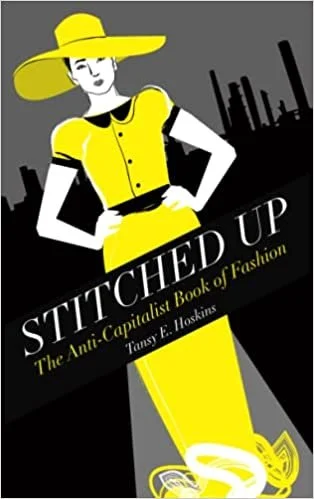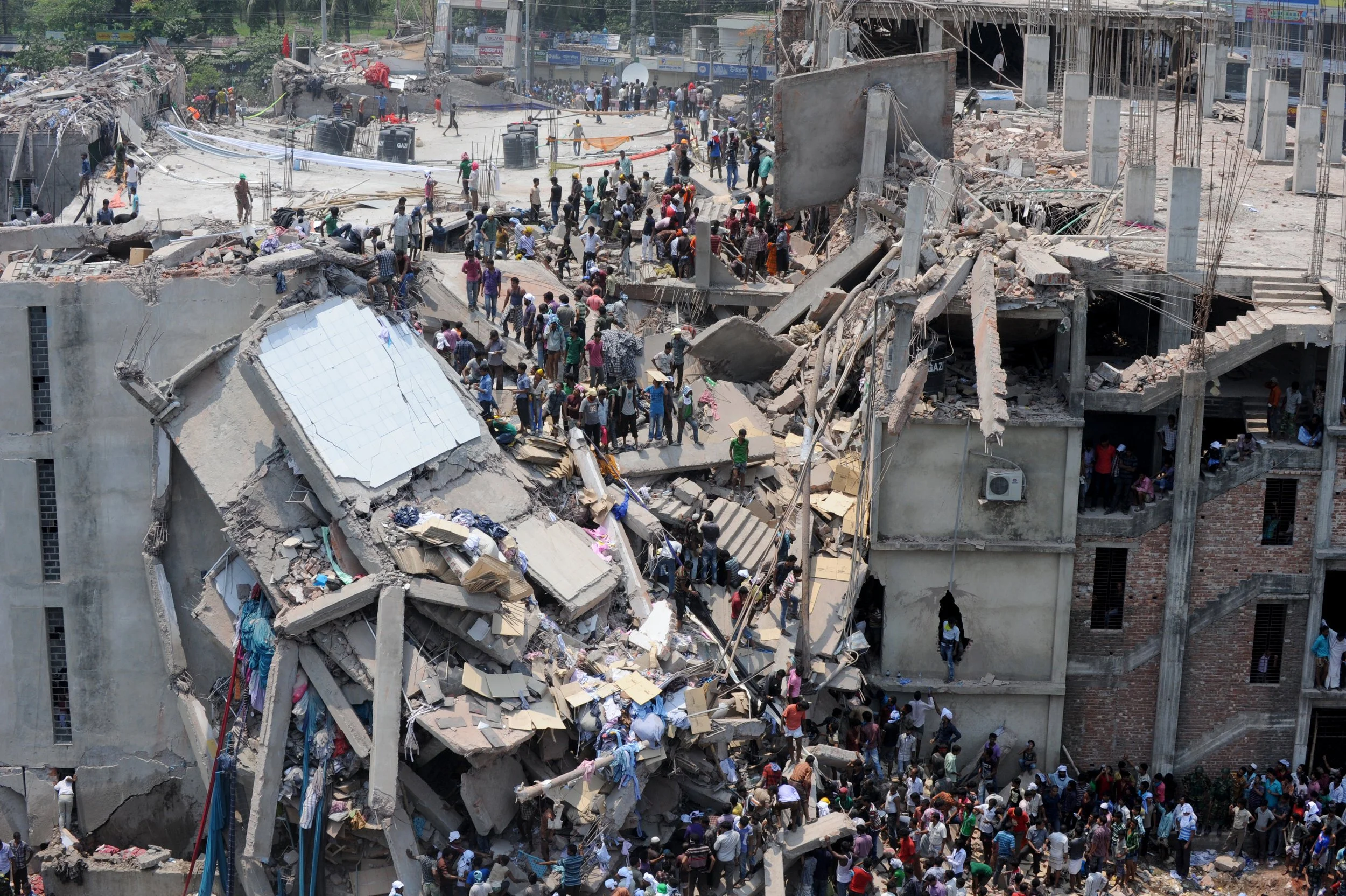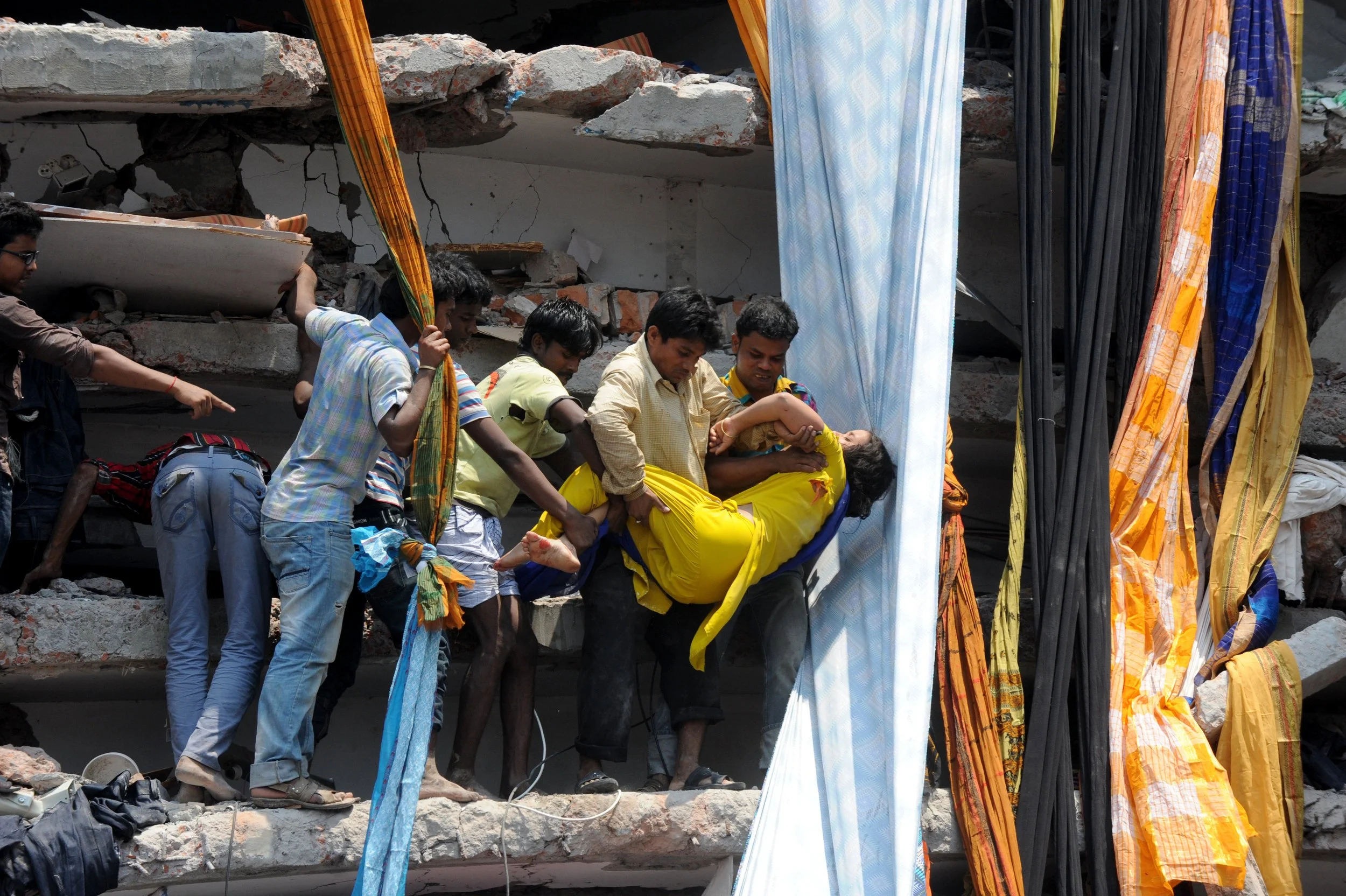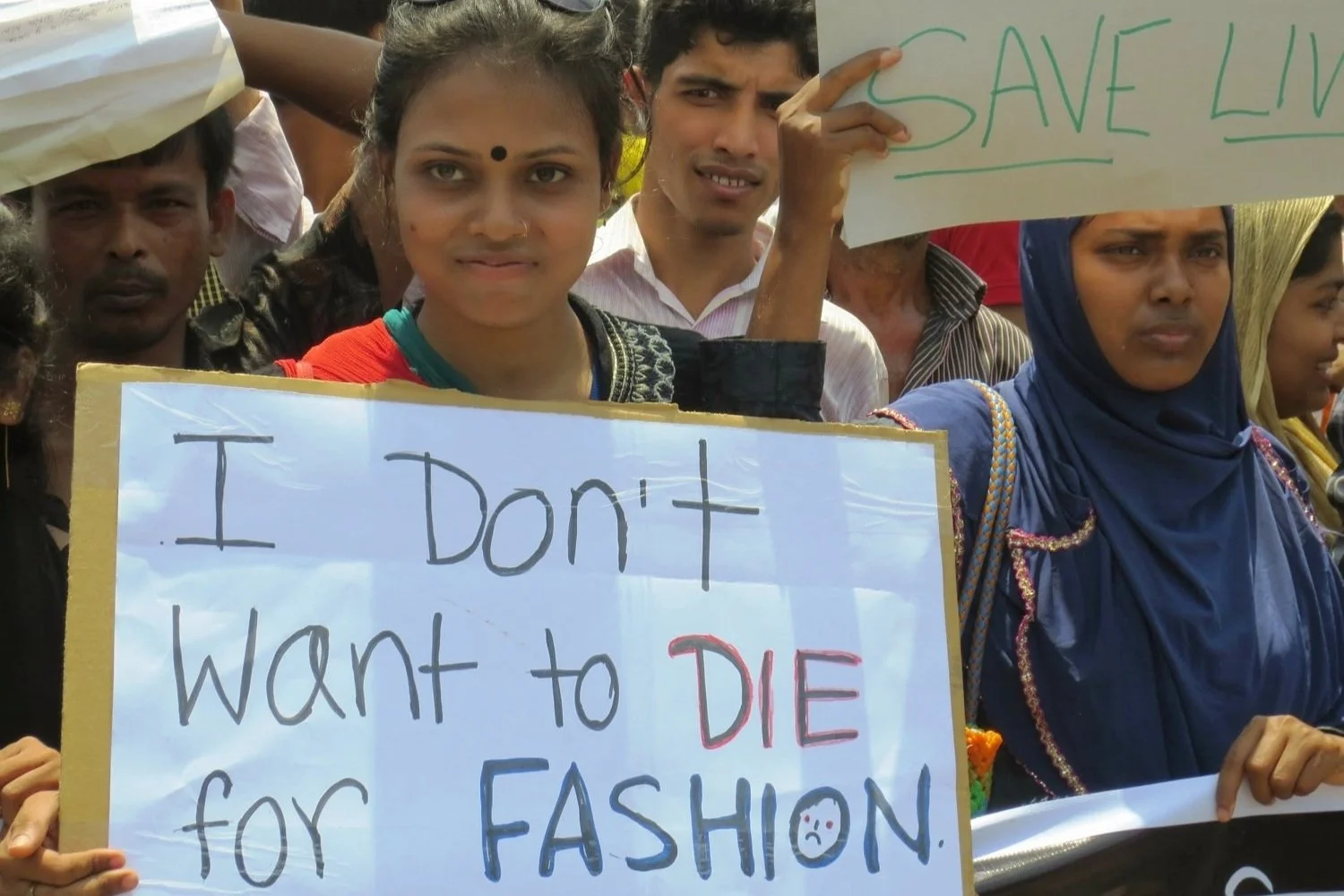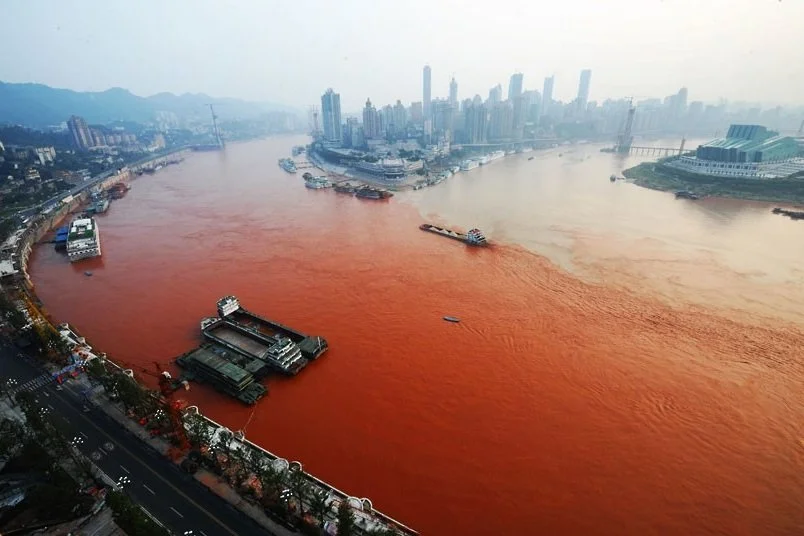What “ethical fashion” won’t fix: How to truly revolutionize the fashion industry
Fashion under capitalism kills. It’s killing people, it’s killing animals, and it’s destroying the planet. But perhaps most dangerously, it is getting away with it by convincing us as consumers that we’re to blame.
In her 2014 book Stitched Up: The Anti-Capitalist Book of Fashion, author Tansy E. Hoskins offers us an alternate reality where fashion is good—it is art, it is authentic, joyful, beautiful.
But it’s a reality we can attain only if we come to terms with the ugly face of fashion as it is now. Hoskins deconstructs the fashion industry under capitalism, its destructive effect on our world, and, most importantly, what we can do about it.
The compelling and comprehensive arguments against capitalist fashion are complemented by a call to action. We are not left feeling disheartened and discouraged by the miserable state of things, but rather hopeful and empowered to create meaningful change.
“Because I find fashion glorious as well as terrible, I write in the hope that it will one day be free from commerce and be experienced by everyone at unimaginable heights of creativity.”
The shameful state of fashion under capitalism
Every year in the Pearl River Delta in China, some 40,000 fingers are severed due to work-related incidents. Common Objective estimates that around 1.4 million workplace injuries take place each year in fashion supply chains, with around 27 million workers suffering from work-related illnesses and diseases.
Garment factories repeatedly collapse or catch fire in incidents that are too frequent and too disastrous in scale. Just between 2012 and 2017, there have been at least 22 fires, explosions, or structural failures in garment factories with well over 1,500 fatalities.
Many of us still remember the horrific events of Rana Plaza in 2013, the eight-story garment factory building which collapsed due to structural failures, killing 1,134 workers and injuring 2,500, who were rescued over the course of three entire weeks. Among the retailers using the factory were Benetton, Bon Marché, Mango, Matalan, Primark, and Walmart.
While waiting to be saved from the rubble, some buried workers resorted to drinking their own urine. One “young woman”, later discovered to be a 13-year-old child laborer, was buried under the rubble for three days, with her arm trapped under a sewing machine. When she was found, she had to amputate her own arm to escape.
A few years earlier in 2010, workers had to jump to their death escaping a fire in a Bangladeshi factory that makes clothes for Gap. The death toll reached 27, with more than 100 people injured.
The fashion industry is one of the biggest polluters in the world. From water waste to greenhouse gas emissions, every step along the way of producing a garment is lined with a myriad of ethical and environmental problems. Cotton farming requires large amounts of water and heavy use of pesticides. Textile processing poisons water as dyes are illegally dumped into lakes and rivers. Overproduction of clothes means that tons of clothing ends up in landfill, taking hundreds of years to decompose.
The general wisdom is that 80% of environmental impact is determined at the design stage. Designers and production specialists should be working together to create sustainable products. Instead, 15% of fabric produced for the fashion industry ends up on the cutting room floor.
In the end, we, the consumers, feel alienated from the product we buy. As Sophie Slater wrote in The Guardian:
“The genesis of our clothes in a horrendous factory is hard to imagine when a package arrives as if from nowhere, wrapped in beautiful tissue, on our doorsteps. Branding sells us ideas of empowerment, or tricks us into thinking that a product represents more than it actually does.”
“Ethical consumption”? We can do better.
Cycle more, drive slower, eat less meat, ditch plastic bags—for years we’ve been told that we need to make better choices as consumers to save the planet.
With social media buzzing with phrases like “ethical clothing”, “minimalism”, “decluttering”, and “zero-waste”, the market has followed suit. Numerous fashion brands are now claiming to uphold standards such as fair pay, clean, low-waste production, and production from waste material or recycled material.
Yet the fact is that just 100 companies responsible for 71% of global greenhouse gas emissions. Only five countries are responsible for 61% of global emissions. Rich households produce more pollution than lower-income households, and that’s in the United States, the biggest carbon polluter in history, and where the living conditions are significantly better than other regions.
In 2015, packaging alone amounts to 35% of plastic production, and 46% of plastic waste worldwide. My local supermarket removed plastic carrier bags at checkout, yet they continue to sell thousands of items in non-recyclable packaging, including the infuriating “individually-wrapped bread rolls”.
Primary plastic production and plastic waste generation by industrial sector, 2015
The truth is that the carbon footprint of the vast majority of the world’s population, as individuals, is not a significant factor in climate change. To believe that we can battle climate change by acting as individuals is like flapping towels in a burning house.
Yet, corporations have been working for decades to make us believe just that.
Climate change is a problem of production, not consumption. To say that is not to be defeatist, it is not to undermine our power to create change.
We, all of us, can create change. Not as individual consumers, but together, as citizens.
What would it take? More than a metal straw or a cotton tote: a change in worldview.
1. Ditch consumer shaming.
It’s important to remember that ethical products aren’t accessible to everyone. Ethical clothing is often the most expensive on the market, which means that only the elite can afford to buy it. In some societies, eco-consciousness will have a harder time gaining traction outside the upper class circle simply because the political and economic climate does not allow it. Not everyone can afford to make ditching plastic their top priority.
It’s important that we try our best as consumers to make better decisions about our purchases, about which businesses we support, and which ones we boycott. It’s even more important to talk to one another and raise awareness. But most important of all is that we focus on the real solution to the problem: collective action against corporate pollution. “System Change Not Climate Change”
It’s action we can all participate in, whether we can afford to shop ethical, or still have to go to Primark.
2. Don’t get sold on the fake religiosity of fashion.
We are being constantly advertised to. It’s not just ads and billboards: OOTD pictures, haul videos, look books—a continuous stream of images that gives the illusion of variety, when, in reality, it is training us slowly to recognize a trend and feel the need to be part of it. Each one of us, at their own pace, after seeing enough images, will recognize that “crop tops are back,” or that “yellow is the color of the season,” and for a week or two, we will all be wearing slight variations of the same thing.
The fast fashion industry continues to make profit by selling us clothes we don’t need through the glorification of fashion, the idea of “retail therapy”—the idea that buying something can make us happy.
It’s an idea that’s hard to resist, but one we should try our best to.
We should strive for a society where everyone has a chance to be happy regardless their appearances or social image. Appearances should not affect things like your ability to get a job, to find housing, or even to make friends, to feel accepted by society. We should have true respect and appreciation for the person, with their cultural makeup, their religious beliefs, their financial means, and how they choose to — or find themselves obligated to — dress due to all of those things.
We should value freedom of expression of all kinds. The freedom to be “fashionable” and the right not to be.
3. Distinguish real efforts from corporate publicity stunts.
The shoe brand TOMS is known for its Buy One Give One model, where for each TOMS pair of shoes sold, a second pair is given to a child in an impoverished country. As Hoskins writes, the TOMS BOGO model has been cited as one of the worst aid ideas of all time. It harms local economies by dumping foreign products in them.
The reality is, there’s no such thing as a free gift. Philanthrocapitalist programs like these, where corporations claim that they can incorporate philanthropy within their for-profit business model, partly cause poverty in the regions they infiltrate because they hamper the region’s ability to industrialize.
We should be careful to distinguish real community efforts against poverty, against inequality, against climate change, from corporate schemes that aim primarily to improve a company’s public image. Even with its track record, H&M can still claim to be “Conscious”, and we’re told that “Monki cares”.
Ethical fashion brands typically:
Release only a few collections each year.
Don’t mass-produce.
Are completely transparent about their supply chain.
Manufacture locally, with design and production in close contact.
Pay their employees fairly.
Manufacture in buildings that meet safety standards.
Don’t use virgin plastic in their packaging or manufacturing process.
Are conscious of water waste.
Are conscious of pollution.
Offering unsold items under financing schemes, instead of disposing of them.
4. Support the empowerment of workers.
Factories owned by rich industrialists are always going to be “sweatshops”. When workers have ownership over the means of production, they will not be forced to labor for an inhumane number of hours in unsafe conditions, risking injury, illness, and death, just to mass-produce garments that no one wants to wear. Collectively-owned factories are run in a way which respects the community. They do not poison the water with toxic dyes. They do not fill the air with deadly dust particles. Because they are democratically run by workers, they are built to safety standards that protect those workers.
Whenever and however we can, we should support unions and organized labor movements. Workers should gain back control over what they produce and the conditions in which they work. Ultimately, this is the dream: factories should be collectively owned by the workers that run them.
